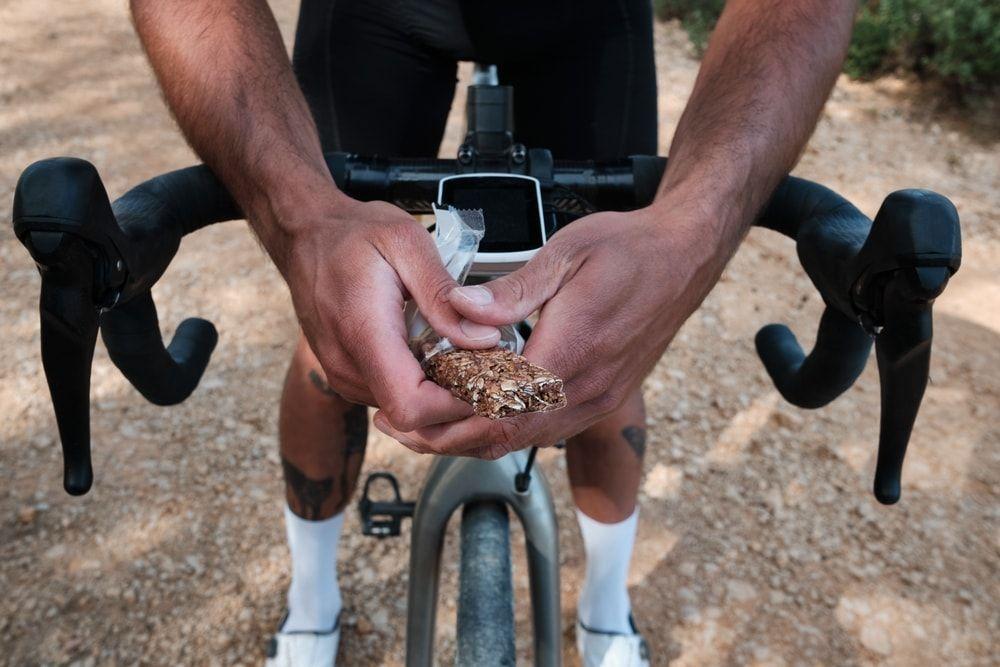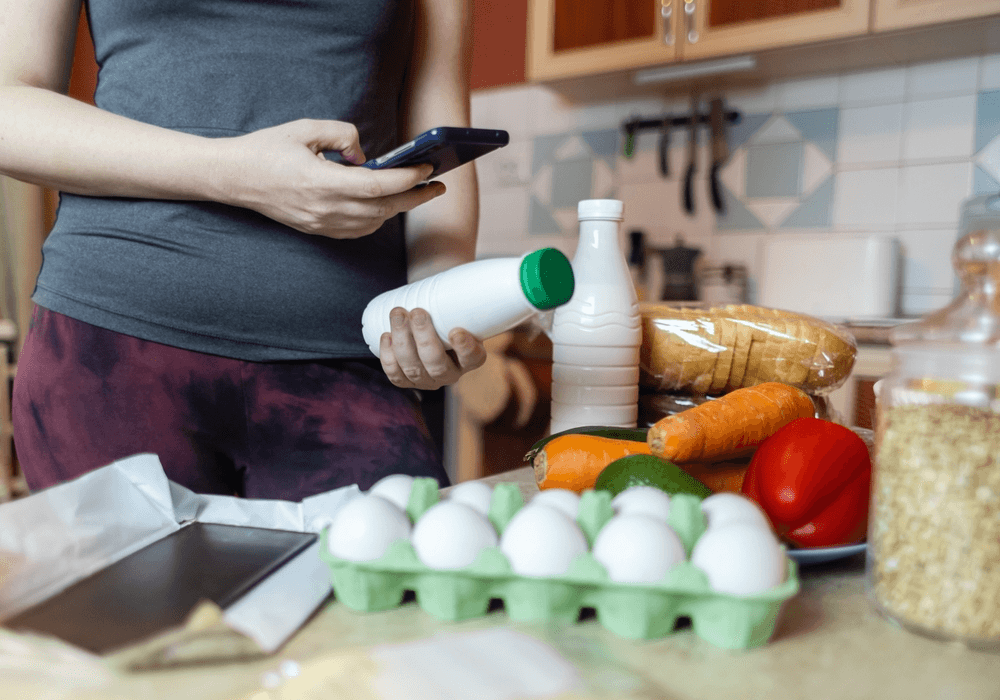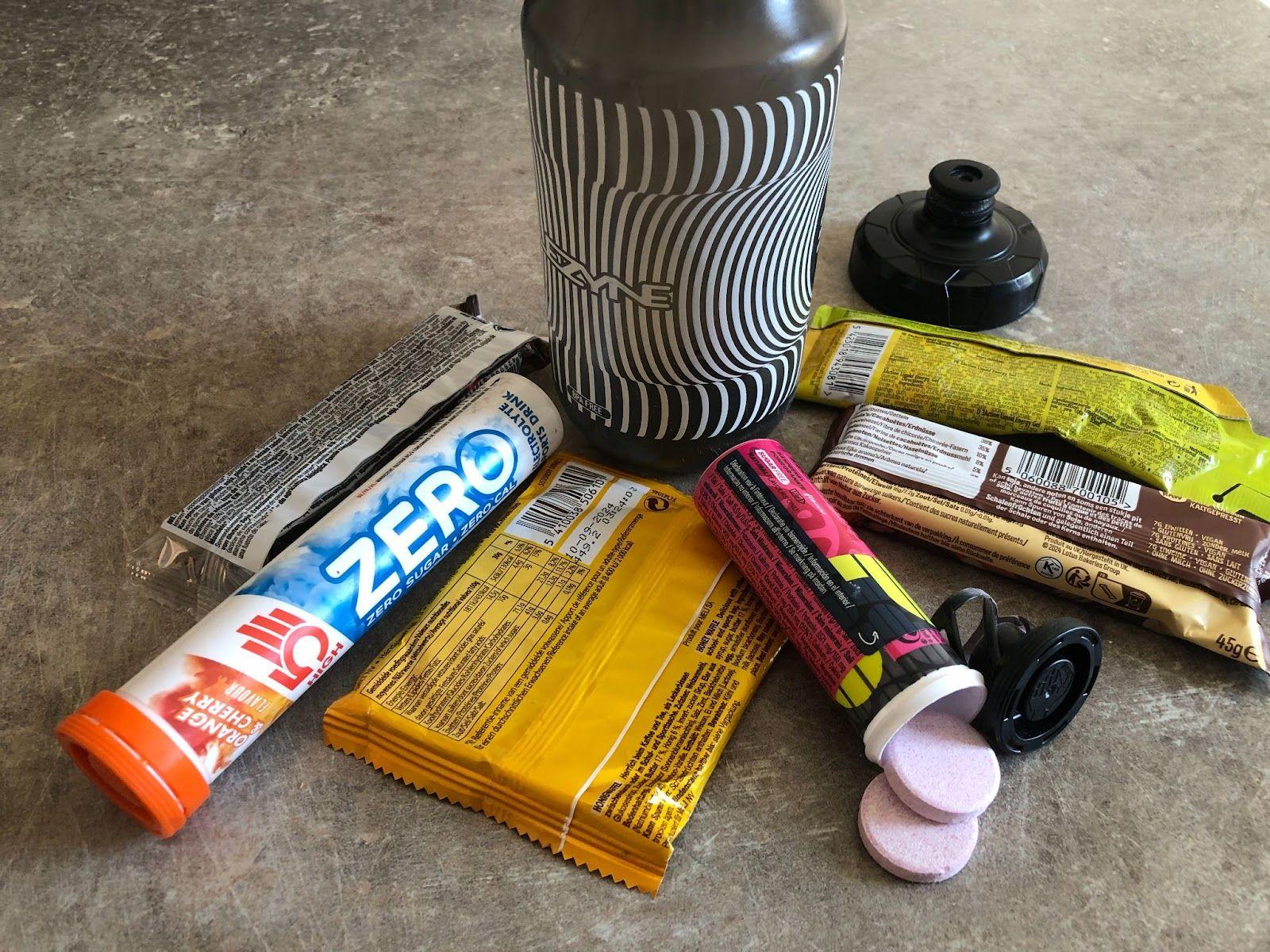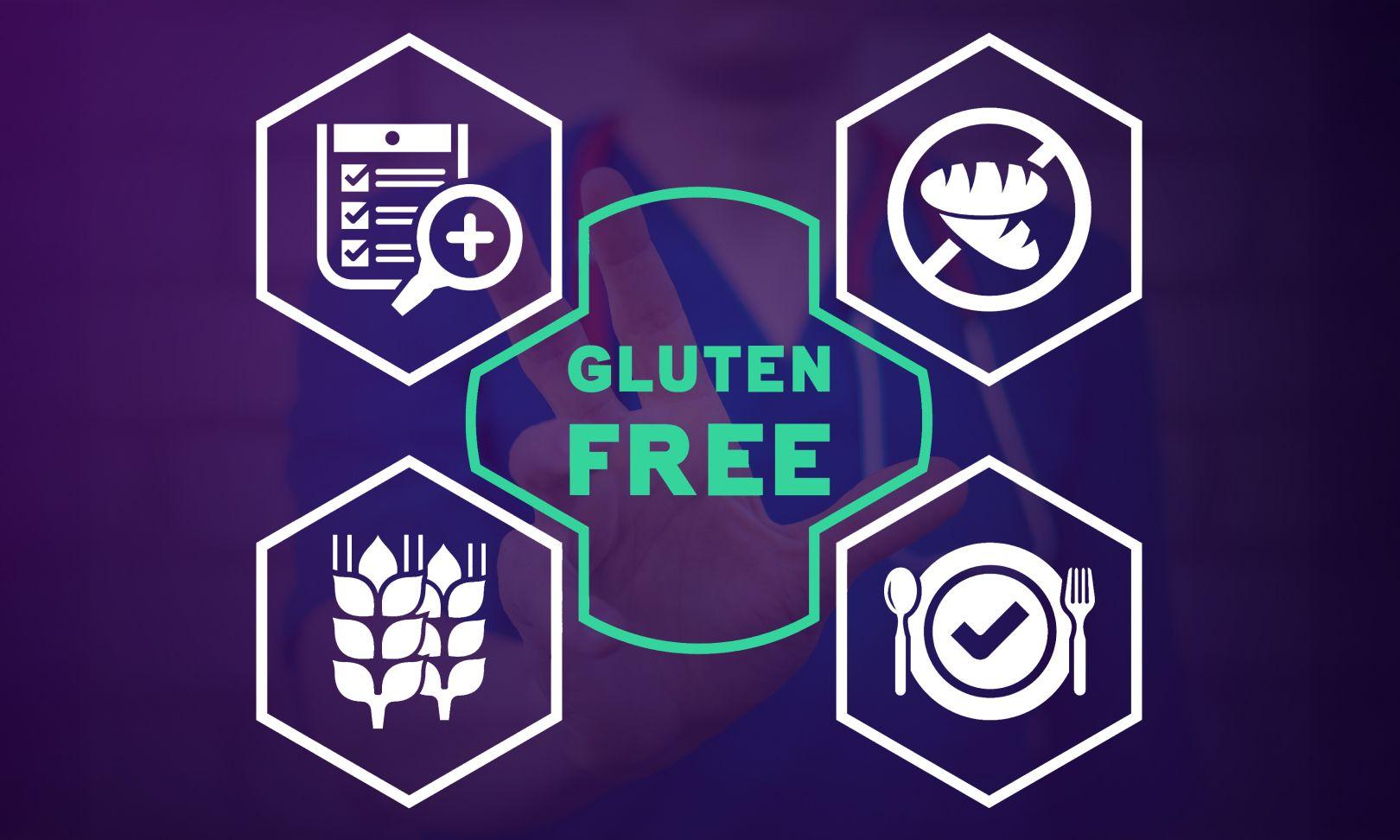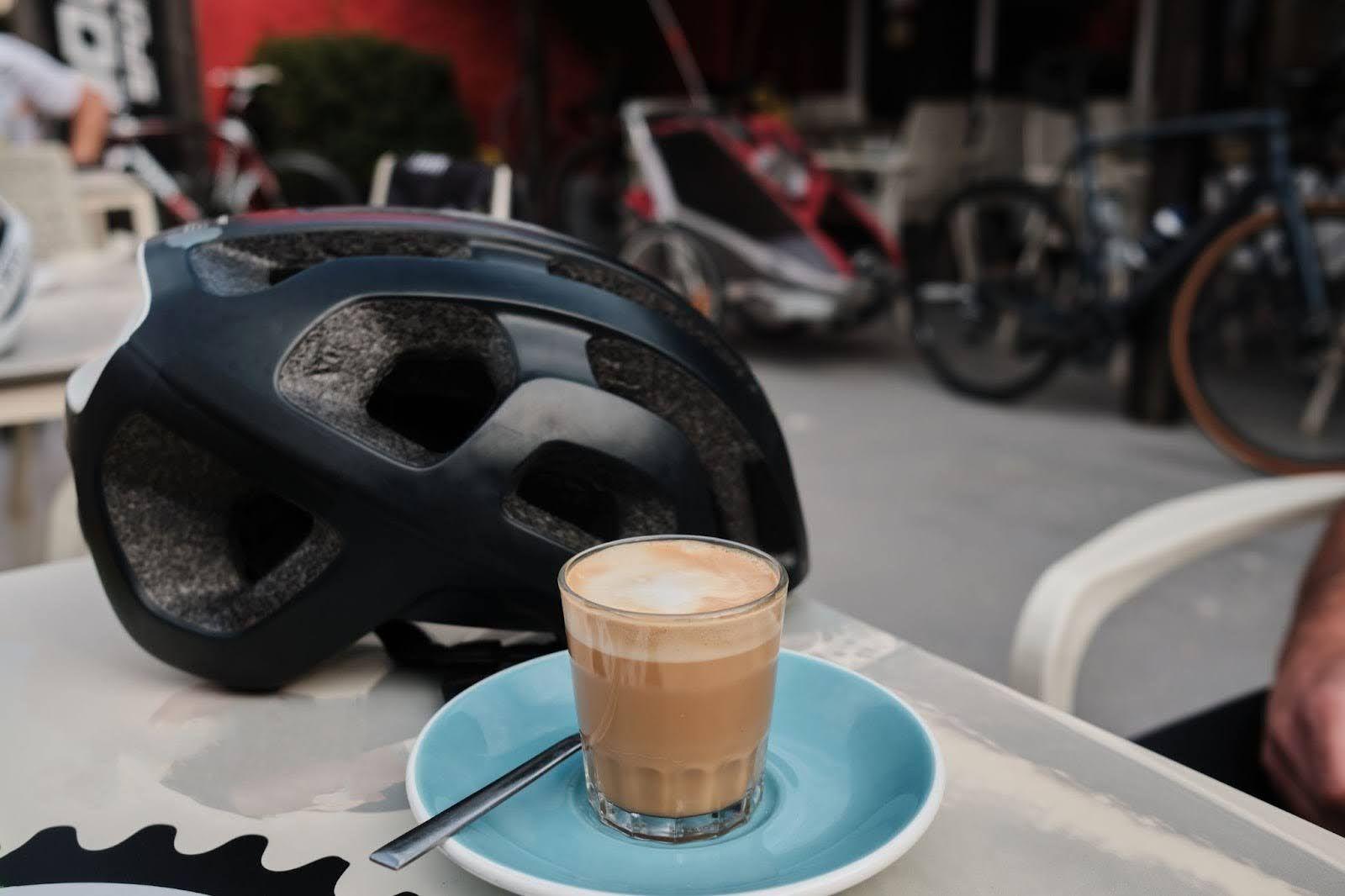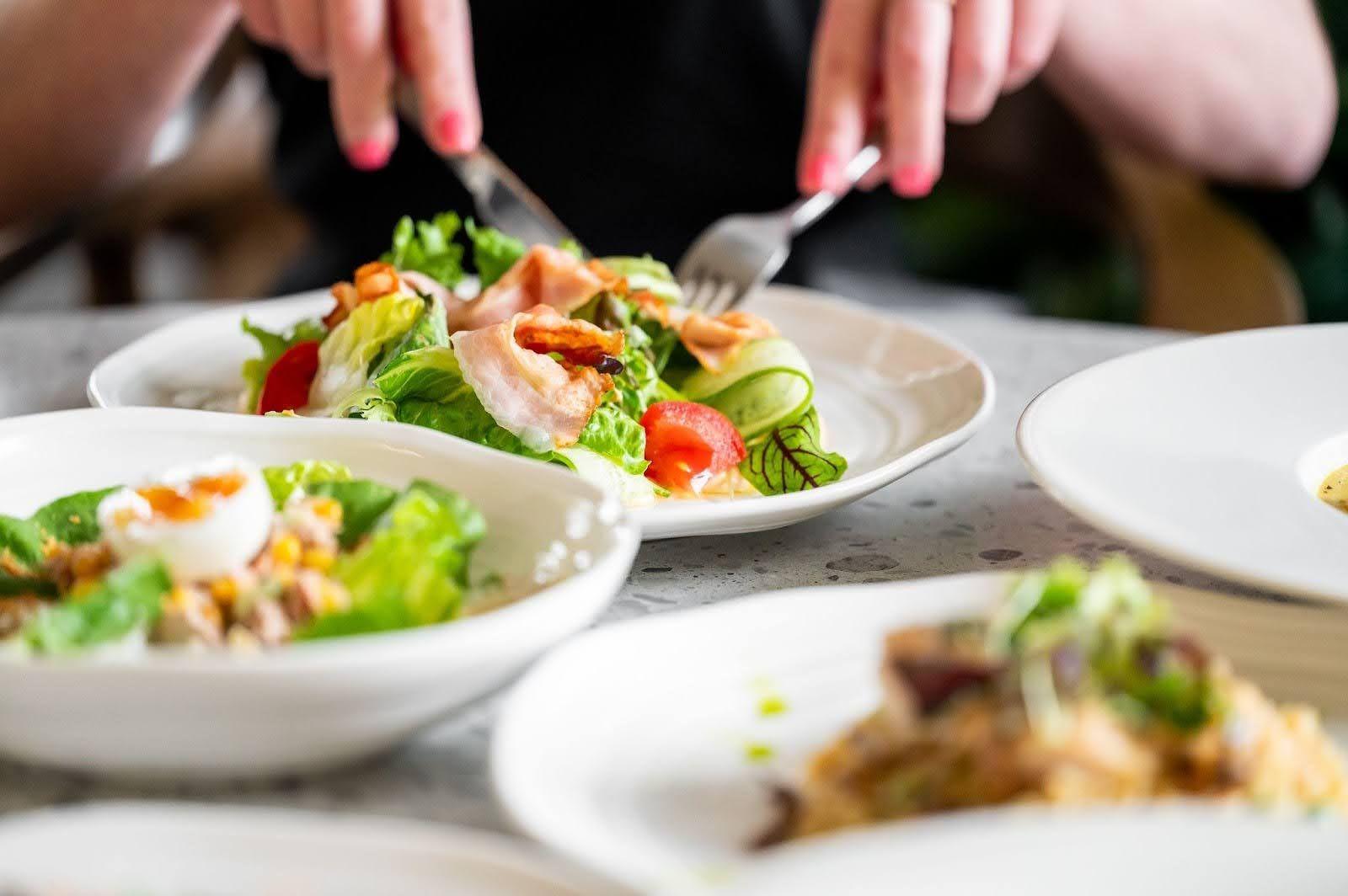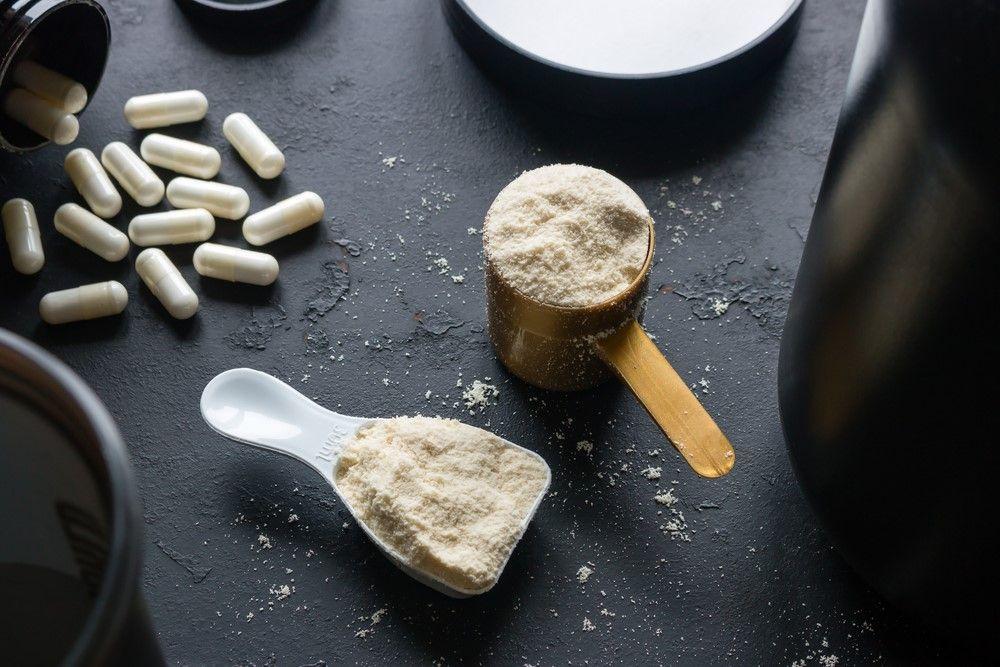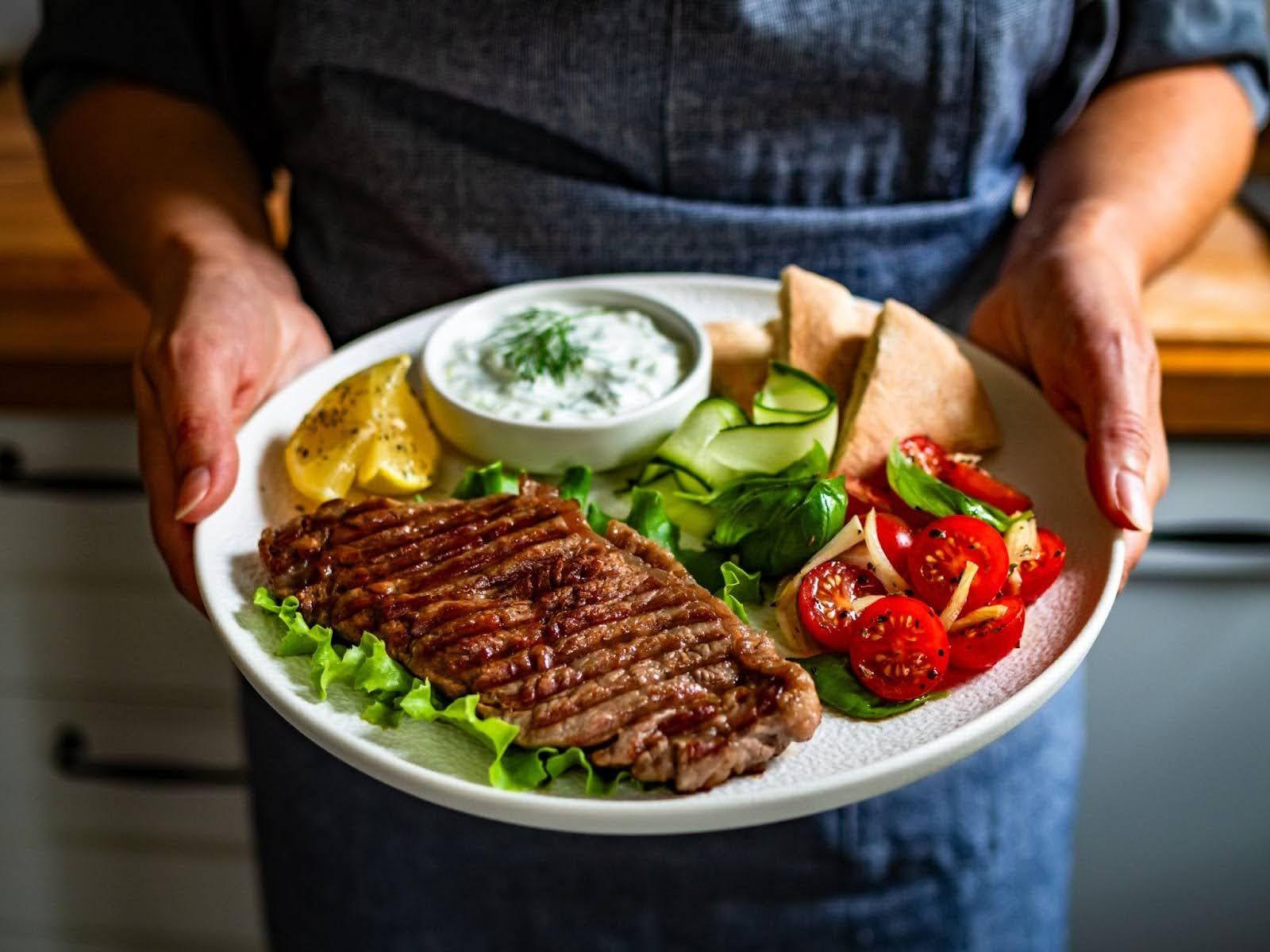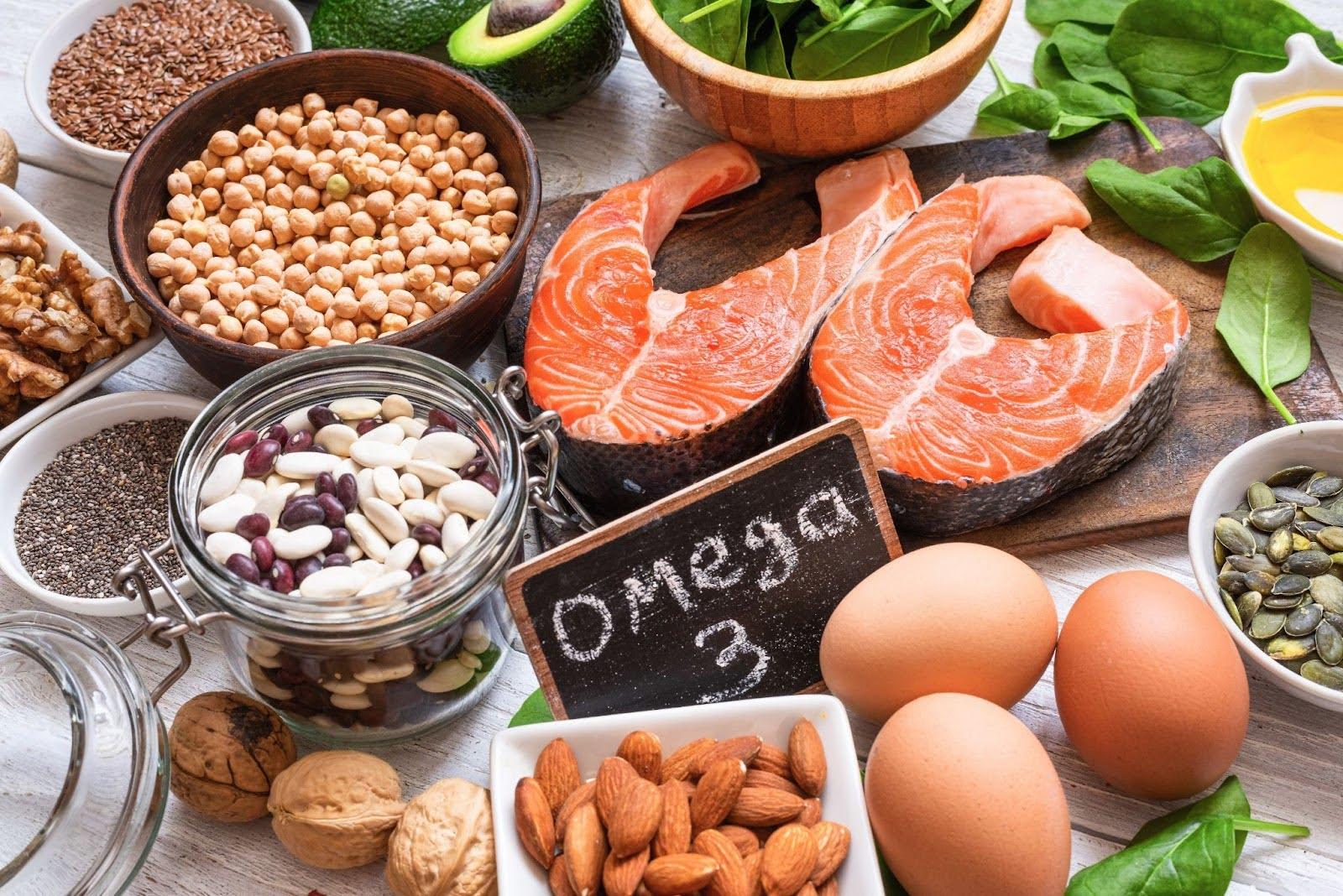Whether you’re an indoor cyclist sweating it out on ROUVY, a weekend warrior tackling century rides or a dedicated endurance athlete, nutrition is key to performance and just as importantly, recovery. Knowing what to eat before, during and after your rides can be the difference between feeling strong and bonking halfway through. In this comprehensive guide we’ll cover the best cycling snacks and what to eat while cycling to keep you energized, improve endurance and accelerate recovery.
Why cycling nutrition matters
Don’t underestimate your bike nutrition though. Cycling is a constant energy-demanding sport and the right snacks will give your body the correct fuel to perform at your best for the whole ride. Proper bike nutrition also prevents fatigue, maintains hydration and aids in muscle recovery. By choosing your snacks wisely you can ride longer, recover faster and feel better overall. Your nutritional choices also influence how well your muscles repair themselves and how quickly your glycogen stores replenish afterwards. Without proper fuelling, riders can feel exhausted, cramp and perform poorly. Put simply, it will ruin your day.
Calories burned while cycling vary depending on intensity, terrain, temperature and individual metabolism. As a rough guide, casual rides between 10-12 mph burn 300-500 calories per hour, moderate rides between 12-16 mph 500-700 calories per hour and high intensity rides above 16 mph or hill climbs 700+ calories per hour. Indoor cycling sessions usually fall in the 400-900 calorie range depending on resistance and effort level.
Macronutrients play a big role in cycling performance. Carbs are the primary fuel source, providing both quick and sustained energy. Protein is for muscle repair and recovery, especially after intense sessions. Healthy fats are a slower burning energy source especially useful for endurance rides and triathlon. Getting the right balance between these macronutrients will give you sustained energy and optimal performance. Everyone is different and cycling nutrition should be tailored to individual needs. Casual riders who ride for fun may not need as many carbs as competitive racers who train for hours every day. Endurance riders need a constant supply of energy dense food for long distances, competitive racers need precision in macronutrient intake to optimize power and recovery. Other factors like body weight, metabolism and fitness level can also play a role in determining the best fuelling strategy. With so many options available it’s always good to experiment and find what works best for you.
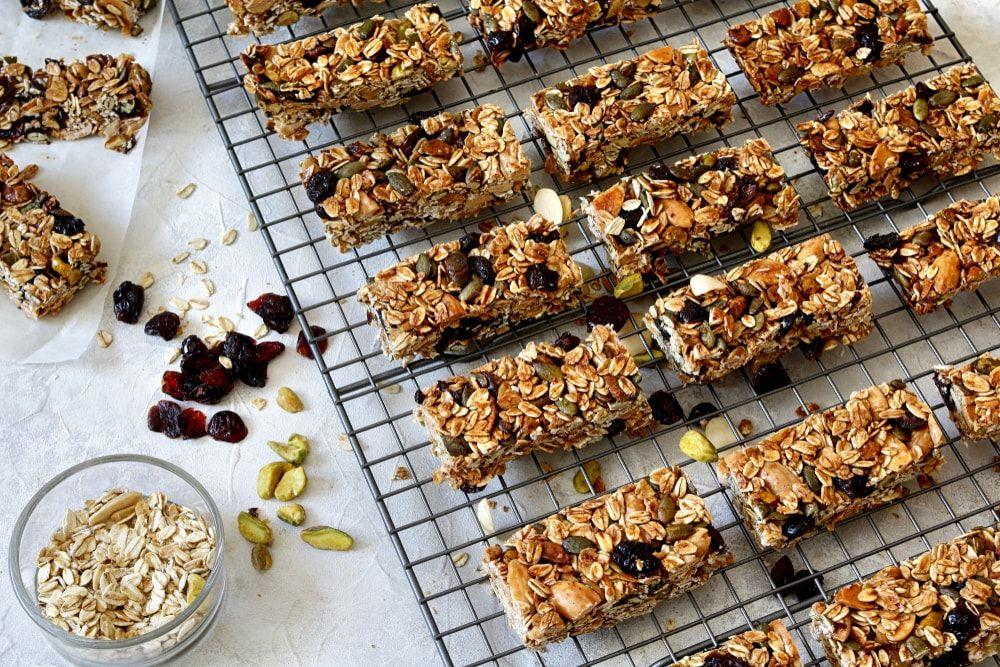
Pre-ride snacks: What to eat before cycling
The timing of pre-ride nutrition has a big impact on energy levels. Eating a balanced meal 2-3 hours before a ride will give you a steady release of energy, while a light high carb snack 30-60 minutes before will give you quick fuel. Short rides under an hour usually require minimal fuelling, so a banana or a small energy bar will do. Medium rides of 1-3 hours require options like oatmeal with honey, whole grain toast with peanut butter or Greek yogurt with granola for sustained energy. Long rides over 3 hours need more substantial meals like rice cakes with jam, small sandwiches or smoothies with protein and carbs.
Some cyclists make the mistake of eating heavy high fat meals too close to their ride which can lead to feeling sluggish and bloated. High fibre foods should also be avoided before cycling to prevent bloating and discomfort. Another common error is overloading on protein before cycling which digests slowly and can cause stomach issues. Not fuelling before a ride at all is also bad as it can lead to early fatigue and reduce endurance. Getting the balance right can make all the difference for your performance.
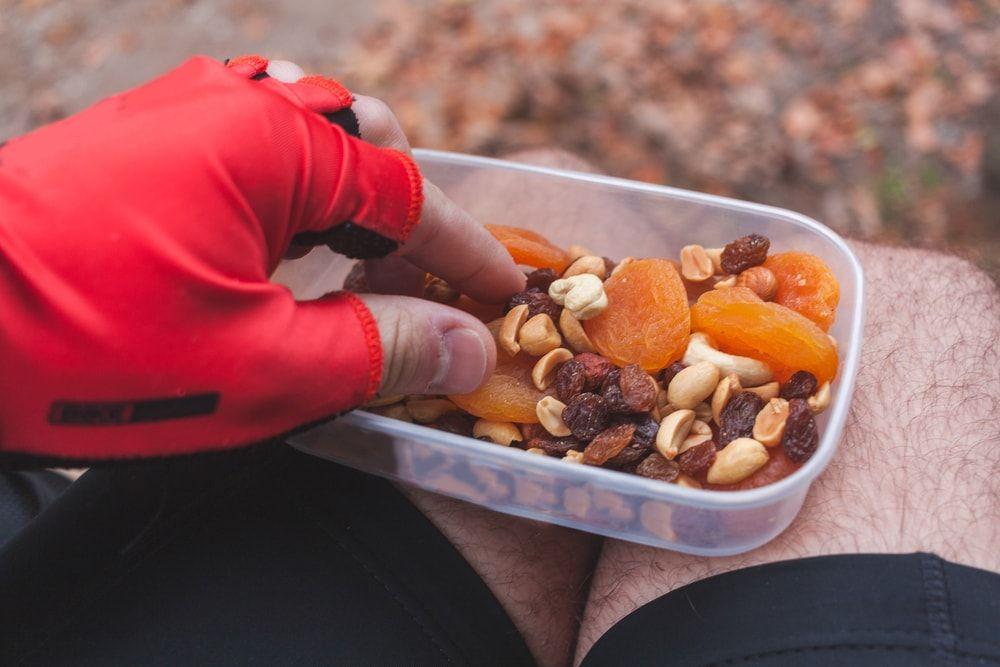
Best Snacks to Eat During Cycling: What to eat on your bike
The body’s carb needs increases according to the duration and intensity of a ride. Rides under an hour require minimal snacks, with hydration the priority. Endurance rides 1-3 hours need 30-60g of carbs per hour which can come from whole foods or energy bars. Ultra distance rides over 4 hours need 60-90g of carbs per hour and should include both simple and complex carbs for sustained energy. The best snacks for different ride durations will vary according to your nutritional needs. Short rides need electrolyte drinks and small bananas. Endurance rides need more substantial fuel sources like dates, energy gels, rice cakes and granola bars. Ultra distance rides need heartier options like mini sandwiches, cheese, crackers and nuts to keep energy up for long periods.
Whole food, energy bars and gels each have their benefits - as well as drawbacks to consider. Whole food provides fibre and sustained energy but takes longer to digest. Energy bars are convenient and balanced but can be highly processed or contain simple sugars that can cause an energy spike and crash. Gels give rapid energy but often have lots of additives and can cause stomach discomfort if overused. Because of this, there is some wariness about using gels among cyclists. Hydration is also key with cyclists needing to consume 500-750ml of fluid per hour depending on temperature and exertion level. Electrolytes should be replenished with sports drinks, coconut water or salt tablets to maintain sodium and potassium balance.
Also remember that different food is digested at different speeds. Fast digesting carbs like bananas, banana chips, or energy gels provide immediate energy and are good for pre-ride snacks or mid-ride fuelling. Slow digesting carbs like whole grains and oats maintain stable blood sugar levels and should be consumed a few hours before cycling.
Forgetting to pack enough food on a long ride can be a problem but some convenience store basics can be used as a substitute. Energy dense options like granola bars, nuts, bananas or chocolate milk can give you a quick energy boost. Stopping at bakeries or cafes along the route can also give you fresh, wholesome sweet snack options. It's always best to carry a small amount of cash or a card so you can buy food if needed.
If you don't want to stop, nutrition during your ride requires some planning as you'll need to carry your supplies with you - so weight is an issue to consider. Ease of eating is also a factor to think about. You don't want a gel that can't be easily opened or an energy bar that falls apart in your hand.
Post-ride recovery snacks
The post-ride recovery window is a critical period for muscle repair and glycogen replenishment. You might not feel like it after excessive exertion but you'll thank yourself later for having a snack. Within 30 minutes of finishing a ride the body is primed to absorb nutrients more efficiently so consuming a mix of protein and carbs during this window accelerates recovery and reduces muscle soreness.
If you wait more than 30 minutes to eat, glycogen synthesis slows down and you'll experience prolonged muscle fatigue and reduced energy for your next ride. If you don't refuel in time, muscle breakdown continues for longer than necessary and can lead to a slower recovery. Your body will also struggle to restore blood sugar levels and you'll feel drained and sluggish for the rest of the day.
Good post-ride snacks include chocolate milk which has the perfect carb to protein ratio of 3:1 to replenish glycogen stores and aid muscle repair. Greek yogurt with fruit and granola is another good mix of protein, carbs and probiotics. Smoothies with protein powder, bananas and oats are a great option. Rice cakes with peanut butter and honey is a good quick recovery snack. While real food offers extra vitamins and minerals, supplements can be convenient for cyclists who need a quick recovery option e.g. protein powders are useful for riders who struggle to meet their protein needs post-ride and electrolyte tablets can help replenish sodium and potassium lost through sweat. Ideally a balanced combination of both is the best solution.
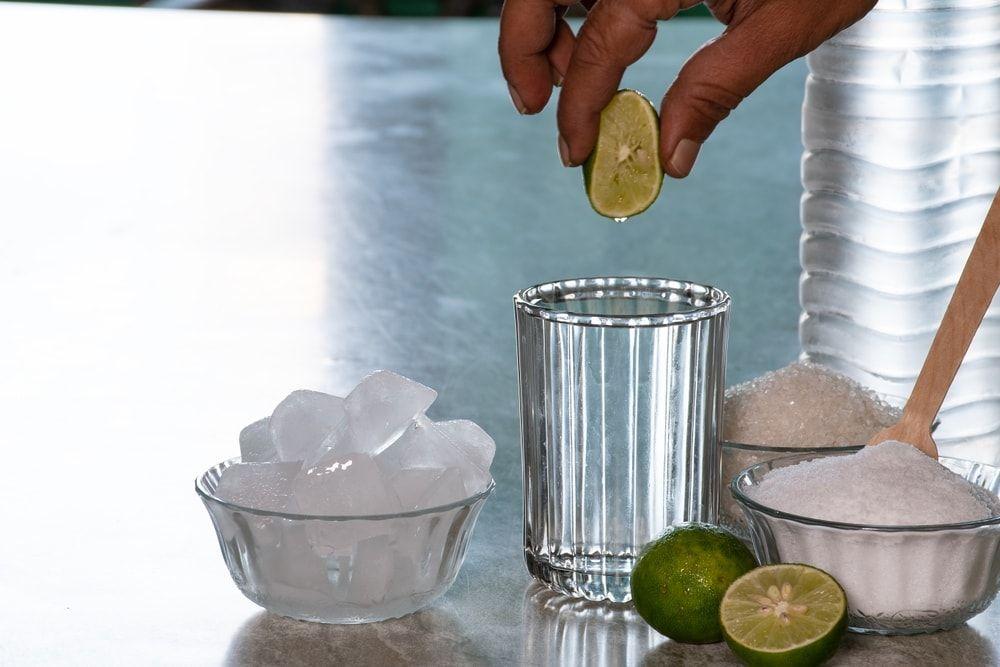
Best cycling snacks: A list of options
What kinds of food make good snacks for cycling? Cyclists need quick, portable snack options to keep their energy up. Popular choices include bananas, dates, nut butter packets, trail mix and rice cakes. Energy bars are probably the most popular of all the portable cycling snacks here. Store-bought energy bar brands like Clif Bars, RXBARs and Skratch Labs are convenient fuelling while the homemade energy bars for cycling are a more natural and cost effective option. For cyclists who prefer savoury snacks, mini sandwiches with peanut butter and jelly or turkey and cheese are a good mix of carbs and protein. Cheese and crackers and hard-boiled eggs are extra options. Hydration is always key with options like coconut water, Nuun and GU Hydration electrolyte tablets and homemade sports drinks made with honey, lemon, sea salt and water being more effective and impactful than plain water.
Cyclists looking to lose weight should choose snacks that provide energy without extra calories. High-protein options like yogurt, boiled eggs and cottage cheese support muscle recovery while keeping hunger in check. Whole foods like nuts provide healthy fats and sustained energy. Fibre-rich choices like apples, carrots and hummus keep you full and maintain stable blood sugar levels. Hydrating snacks like watermelon and cucumbers support weight loss and rehydration. Try to avoid high-sugar, processed energy bars and opt for homemade options to maintain a balanced diet without compromising performance.
Depending where you live in the world and the daily weather conditions, nutrition needs can vary greatly. In hot weather, hydration is even more crucial and riders should prioritise electrolyte-rich drinks and high-sodium snacks like pretzels or salted nuts to replace lost minerals. In cold weather, cycling demands energy-dense foods to keep the body warm so options like nut-based bars, oatmeal and warm tea-based hydration drinks are more optimal. Always know what the weather will be like for the day ahead of your ride.
Reducing our environmental impact while still fuelling properly is a growing concern among cyclists and affects the choices we make. Simple changes can make a big difference. Reusable containers and silicone food wraps can replace single-use plastic wrappers. Buying snacks in bulk and preparing homemade energy bars or rice cakes reduces packaging waste. Many brands now offer biodegradable energy bar wrappers and sustainably sourced ingredients, providing eco-friendly alternatives to traditional packaged snacks.
And lastly, a word of praise for the good old banana. Bananas (or banana slices) make an excellent cycling snack thanks to their natural balance of carbohydrates, electrolytes, and digestibility. They provide a quick and sustained energy boost because they contain natural sugars (glucose, fructose, and sucrose), which are rapidly absorbed to fuel muscles efficiently during a ride.
They are also rich in potassium, an essential electrolyte that helps prevent muscle cramps and maintain proper fluid balance, which is crucial for endurance cycling. They contain fibre, but in a low enough amount to avoid digestive discomfort. On top of that, they are affordable, portable, and environmentally friendly.
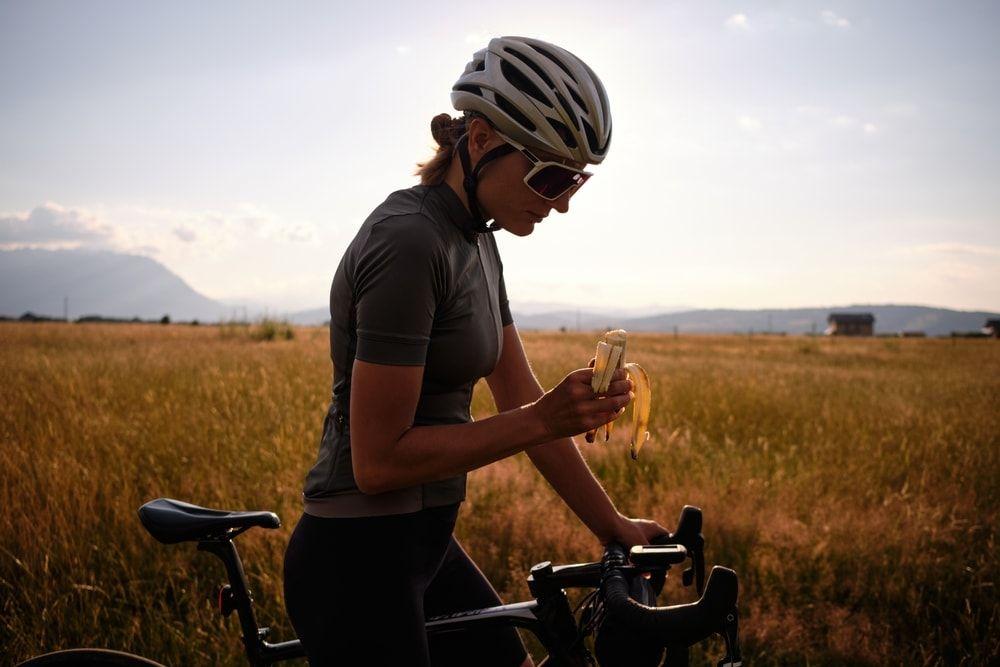
Homemade cycling snacks
It's good to know exactly what you are putting into your body. Store-bought food might be more convenient but homemade bike snacks can allow cyclists to control ingredients, avoid excessive sugars, and create fuel that is tailored to your nutritional needs. Not only do they contain less processed ingredients but they taste great too! These recipes provide sustained energy and are easy to prepare.
Quick & easy energy bars: A great homemade alternative to store-bought energy bars includes oats, honey, nut butter, chia seeds, dried fruit, and a pinch of sea salt. Mix the ingredients, press them into a pan, refrigerate, and cut into bars for an easy grab-and-go cycling snack. You can experiment and personalize them to find your ideal combination.
DIY Electrolyte drinks: Hydration is crucial for endurance rides, and an effective homemade electrolyte drink can be made using 500 ml of water, the juice of half a lemon, 1 tbsp honey, and ¼ tsp sea salt. This provides natural electrolytes without the artificial additives found in many store-bought sports drinks.
High-Carb Snacks for Long Rides: For rides over three hours, high-carb homemade snacks like rice cakes with jam, sweet potatoes, boiled potatoes with salt, or oat-based energy balls provide a slow and steady energy release. These options are also easy to digest and offer the sustained endurance that is so crucial.
Protein-Packed post-ride recovery boosts: Proper recovery is key after a long ride, and a homemade protein-rich snack helps rebuild muscles. Snacks like a Greek yogurt smoothie with banana, protein powder and oats or cottage cheese with berries and almonds will provide an ideal balance of protein and carbohydrates for muscle repair and taste delicious!
Common cycling nutrition mistakes
Finding the right balance between overeating and under-fuelling can be tricky, especially for less experienced cyclists. Eating too much can make you feel sluggish and eating too little can lead to fatigue and poor performance. Relying too much on processed sports nutrition can also be bad, so consider that whole foods often provide better nutrients. Neglecting hydration is another common mistake, many cyclists wait until they feel thirsty to drink which can lead to dehydration and poor performance. Hydrate before and after your ride and drink regularly in small amounts during it. The more you ride, the more you'll get to know your own body and the best practices required to stay in top condition.
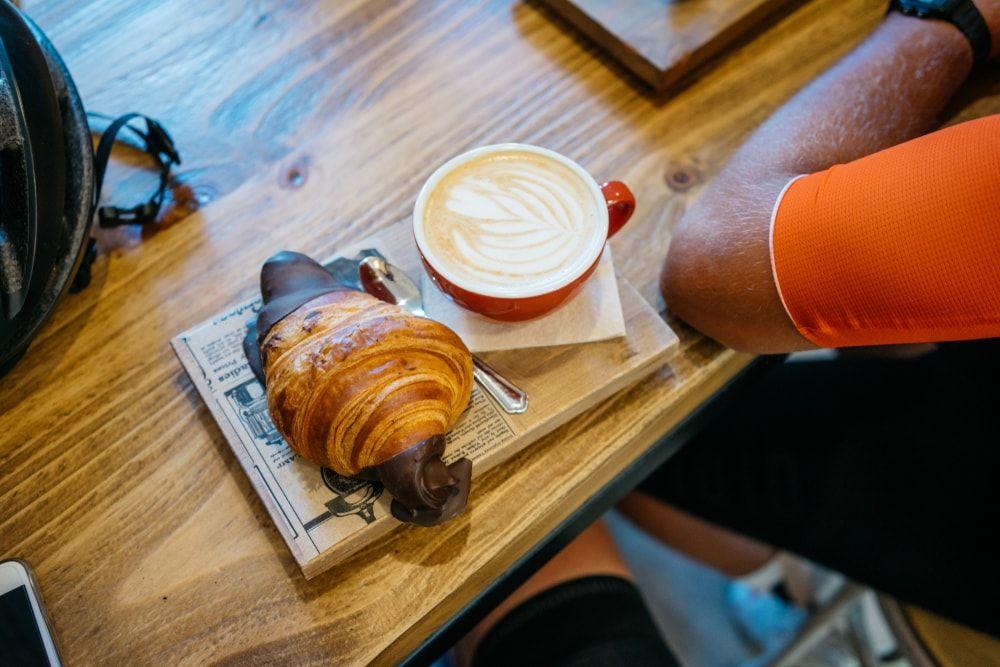
Caffeine and cycling: benefits and drawbacks
Caffeine, and coffee in particular, is an important part of cycling culture. It’s widely used by cyclists to enhance endurance and mental alertness. A moderate amount of caffeine from coffee, caffeinated energy bars, gels or green tea can improve performance and delay fatigue. Don’t overdo it though, as excessive caffeine intake can lead to dehydration, jitteriness and energy crash. Riders should experiment with their caffeine intake during training rides and find their limits before using it in races or long endurance rides.
Conclusion: What's the ultimate cycling snack?
The banana might have a good claim but there’s no single ultimate cycling snack. Instead it’s best to use a combination of foods that work for you, depending on the type of ride, your own metabolism and other external factors like temperature. Having a basic understanding of how different nutrients affect your body is the first step towards good planning and better riding.
Short rides require lighter snacks and long rides demand more substantial energy sources. Hydration is just as important as food intake, as electrolytes prevent cramping and dehydration. Post-ride recovery is key, with a combination of protein and carbs consumed within 30 minutes of finishing a ride being ideal for optimal muscle repair. Homemade snacks are great - they’re cost-effective, customisable and made from natural ingredients.
Don’t underestimate the power of snacks and by making informed nutritional choices you can boost endurance, optimise recovery and enjoy your rides more than ever!
Additional reading and references:
1. Nutrition and Indoor Cycling: A Cross-Sectional Analysis of Carbohydrate Intake for Online Racing and Training
This study investigates the carbohydrate consumption patterns of indoor cyclists engaged in online racing and training. The findings highlight the importance of adequate carbohydrate intake to sustain performance and prevent early fatigue in high-intensity sessions. Read the full article: Nutrition and Indoor Cycling
2. Training, Environmental, and Nutritional Practices in Indoor Cycling: An Explorative Cross-Sectional Questionnaire Analysis
This research explores how indoor cyclists adapt their training, environmental conditions, and nutritional strategies. It provides insights into the role of cycling hydration strategies, meal timing, and macronutrient intake in optimizing performance in controlled indoor settings. Read the full article: Training, Environmental, and Nutritional Practices in Indoor Cycling
3. Nutritional Ergogenic Aids in Cycling: A Systematic Review
This systematic review evaluates the effectiveness of various nutritional supplements, including caffeine, creatine, and nitrates, in enhancing cycling performance. The findings provide evidence-based guidance on the use of ergogenic aids to optimize endurance, power, and recovery. Read the full article: Nutritional Ergogenic Aids in Cycling
